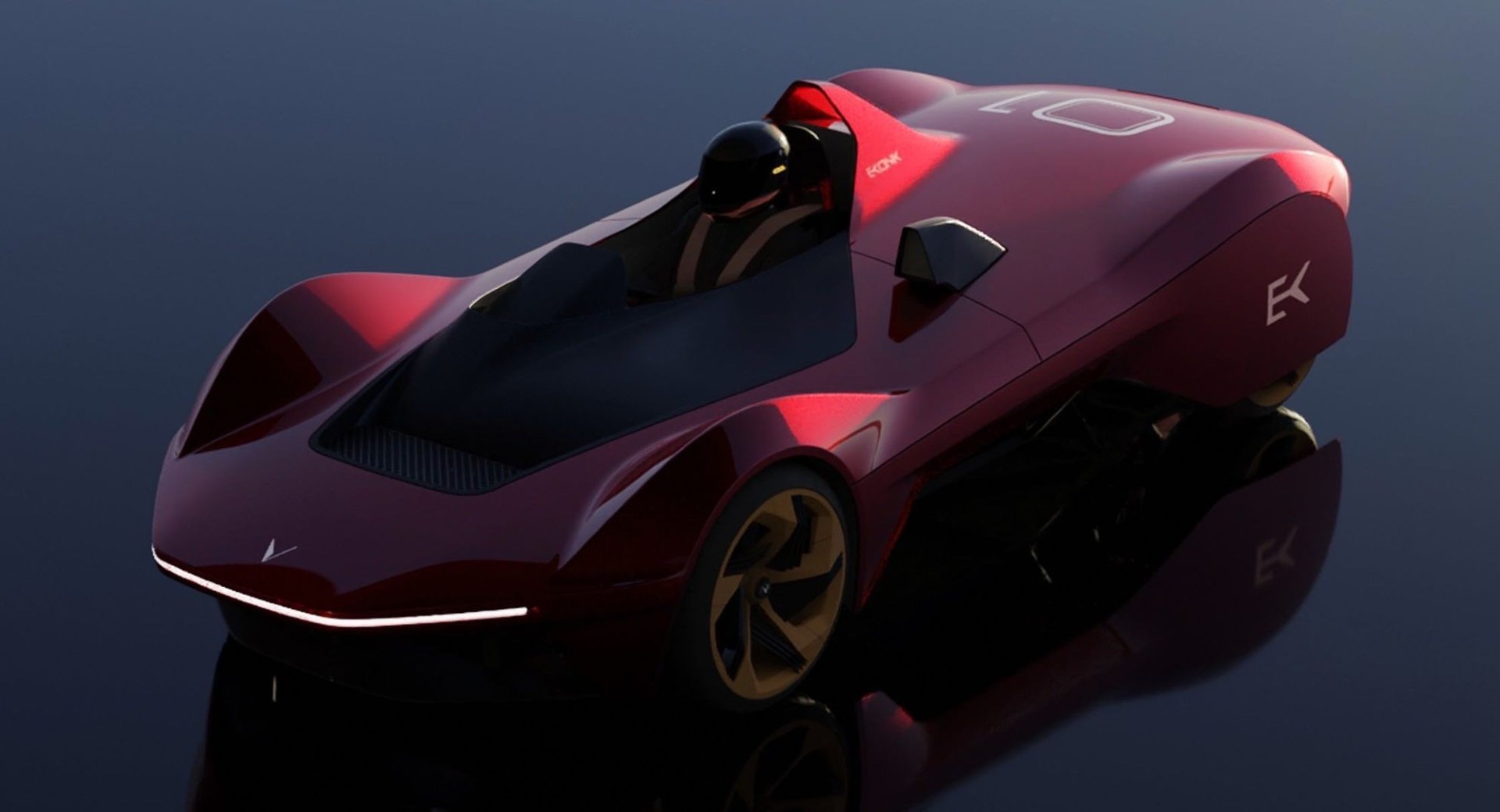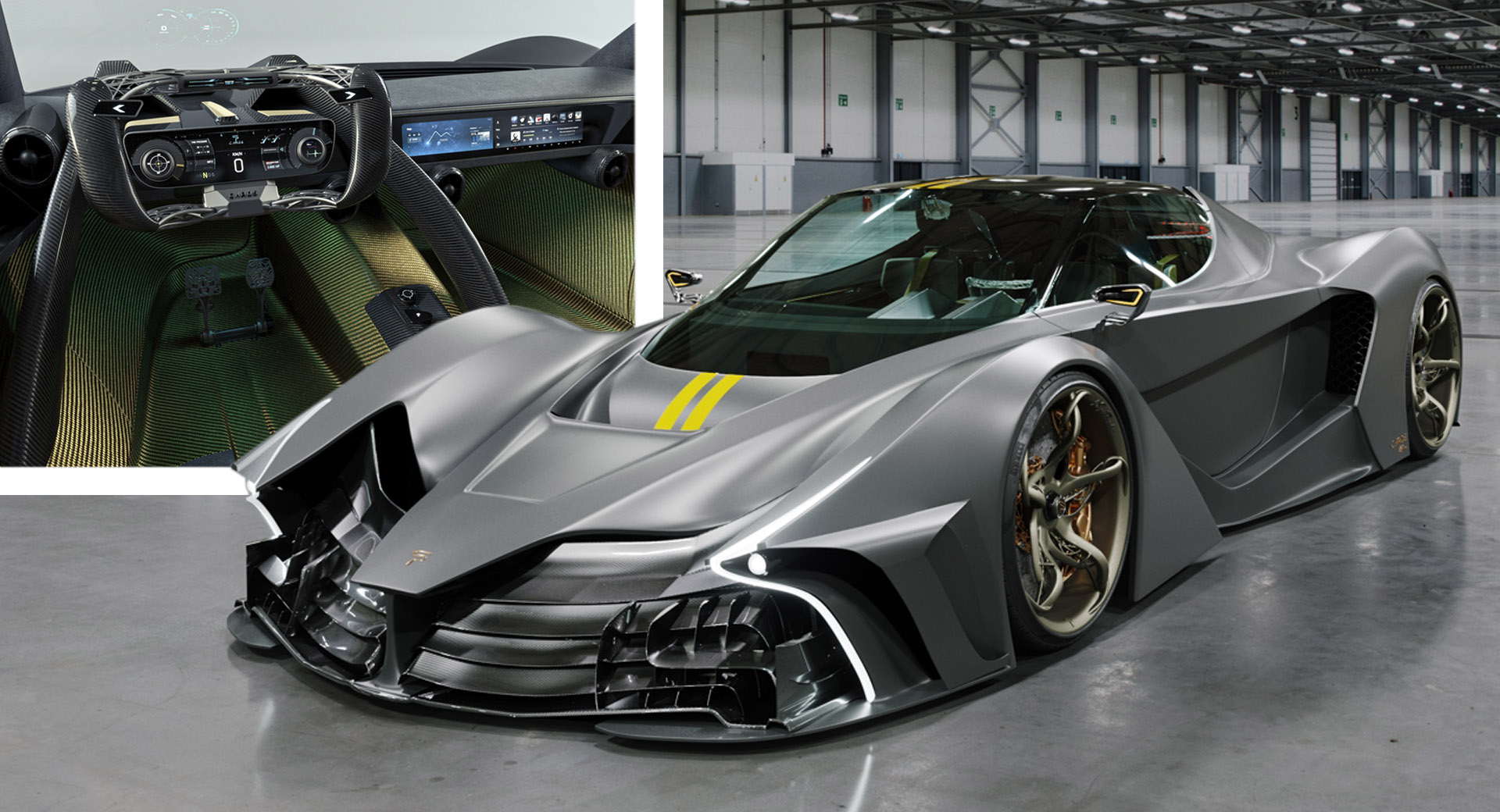The sports car and supercar market is shrinking faster than the icecaps. But judging by the endless parade of brand new supercar startups we devote space to each week, there are a bunch of too-wealthy investors who haven’t heard the news.
And the fact that the VW Group spent literally billions of dollars to create the Bugatti Chiron and had to get Michelin to custom build a carbon-fiber reinforced tire safe enough to carry the Super Sport 300+ over 300 mph doesn’t seem to have put them off from trying to do better and go faster.
The truth is these projects are often just a means of drumming up interest in other projects or technologies and are never intended for production, while others run out of money or underestimate the complexity of creating an entire car (and brand) from scratch.
We’ve rounded up 10 of the mostly rendered contenders for your supercar budget. Some have been kicking around for a while, some are new, and many are so far fetched they make the Christmas story seem rational. Yeah, both of them. Take a look then tell us which of these cars, if any, you think has a hope in hell of making it to the street.
Devel Sixteen
One of the original vaporware hypercars, the $2.2 million Devel Sixteen first appeared at the 2013 Dubai Motor Show promising 5000 hp from a 16-cylinder engine and a 348 mph (560 km/h) top speed. In the years since, the project has been connected to some credible names, including Paulo Garrella, who spent many years at Pininfarina and most recently created the SCG-003 with Jim Glickenhaus and the battery-powered Aspark Owl hypercar.
Related: After Four Years of No-Shows, Is The Devel Sixteen Hypercar Really Happening?
View this post on Instagram
Still, the company has yet to deliver a car, let alone prove its top speed credentials, but unlike some of the other startups it does at least have a working test vehicle. Devel’s Instagram account showed a prototype in action this summer, and told us to “stay tuned”, but there’s been little activity since.
Mean Metal Motors Azani
India isn’t the first country that springs to mind when someone mentions supercars, or the second, third, fourth or even 50th, but Mean Metal Motors wants to change that. The all-electric Azani is claimed to have 1,000 hp and 737 lb-ft of torque, enabling it to hit 60 mph (96 km/h) in 2.1 seconds and top out at 220 mph (354 km/h), while a 120 kWh battery gives a theoretical range of 325 miles (523 km).
A huge button calling website visitors to “Invest” suggests the Azani isn’t going to hit the street anytime soon. Our guess is the supercar is merely a shop window for the company’s AI-assisted low-volume production methods and modular construction philosophy that could find its way into less exotic EVs.
Alieno Arcanum
Looking like a Mansory-ised Lamborghini Huracan inspired by a Vector W8, the carbon-bodied Alieno Arcanum hails from that hypercar mecca that is… Bulgaria. The technical spec, which appears to have been dreamed up by Pinnochio, includes six hub motors per wheel for the 303-mph (488 km/h) range topper, and power outputs stretching from 2574 hp to 5150 hp depending on model.
The $1.76 million Arcanum was supposed to enter production in January 2021, but we’ve yet to see anything beyond renders of the car, although the company’s website shows pictures of autoclaves apparently bought to make the carbon parts, and a scruffy wasteland it claims is currently being developed into a factory.
Hyperion XP-1
Supercars are finally going electric, but not everyone is convinced that battery power is the way forward. U.S.-based Hyperion’s XP-1 employs hydrogen fuel cell tech to send this wild Bugatti-like machine to 60 mph in less than 2.2 seconds, and on to a top speed of 221 mph (356 km/h).
Related: Rivian Goes Public At $78 Per Share, Quickly Surges Past $100
Though the all-wheel drive XP-1 has been spotted testing on U.S. roads we still don’t know how much power it makes or the configuration of the multiple electric motors. But we do know it’s slated to have a range of 1,016 miles (1,635 km), which is just as well, given hydrogen fuel stations make Ferrari 250 GTOs look numerous.
Dendrobium D-1
There’s been a suspicious lack of news from Dendrobium in the last couple of years, which is a shame because this project showed some real promise. Conceived by Singapore’s Vanda Electrics, the crazy-looking hypercar has elements of single seater racer in a design that was worked on by Peter Stevens of McLaren F1 fame, and promised an 1,800-hp electric drivetrain developed by Williams Advanced Engineering.
We reached out to Dendrobium but haven’t heard back, though the fact that the website redirects to a page offering the URL for $100k suggests production, which was meant to take place in the UK, isn’t imminent…
Elektron Truva And Quasar
Most supercar startup fantasists are content to render a single car that we’re told will redefine the market, blah, blah, blah. But Germany’s Elektron launched two supercars in a single year. When we say launched, we mean sent out a bunch of rendered images and some stats.
First out was the Quasar seen here, a 2,300-hp quad-motor EV designed to rival the Lotus Evija that’s claimed to be good for 0-62 mph in 1.65 seconds, and a top end of 280 mph (450 km/h). Elektron Motors says the Quasar will launch in 2023 with production capped to 99 examples. That news was followed five months later by the slightly more sensible 1,400 hp Truva, which the company says will sell for €600,000 ($679,000).
Morand Cars
Hailing from Switzerland, Morand Cars’ unnamed supercar could pass for the C8 Corvette’s better looking baby brother. But while the C8 is a traditional ICE sports car you can almost afford, the Morand is a 1,100 hp hybrid you definitely can’t unless you got into Bitcoin in 1923.
Both the 5.2-liter V10-powered gasoline-electric car and a fully electric companion model with a claimed 1,950 hp will cost 2,300,000 Swiss Francs ($1.9 million / £1.78 million), and production is limited to 73 units. If production ever starts, that is. But with notable names like former McLaren F1 race director Eric Boullier involved, it has more credibility than some on this list.
Farnova Othello
The going rate for an 1,800 hp imaginary EV supercar seems to be around $2 million, but China’s Farnova Automotive reckons it can build you one for less than $290k. Called the Othello, it’s based on the chassis of the also-Chinese Qiantu K50, a hunchback electric sports coupe that was supposed to break into the U.S. but unsurprisingly didn’t. Which doesn’t exactly bode well, does it?
Vazirani Ekonk
Related: Is EV Startup Byton Going Bye-Bye?
There’s a sweet irony in a man named Chunky Vazirani launching a car that’s claimed to be the world’s lightest EV. Which, if it really does come in at 738 kg (1,627 lbs), the single-seat Ekonk would be. Vazirani claims that feat is achieved by using air rather than liquid to cool the batter packs, of which there is conspicuously scant information.
SP Automotive Chaos
Beyond Ludicrous there’s Plaid, and beyond hypercar there’s ultracar, or there is if you believe Greek entrepreneur Spyros Panopoulos, which can get pretty difficult at times. I mean, just look at some of these numbers he’s claiming for the SP Automotive Chaos: between 2,049 and 3,065 hp from a twin-turbo 4.0-liter V10, a 7.9-second quarter mile time, over 310 mph (+500 km/h) top speed and prices that range from $6.2-14 million depending on spec.
Despite the presence of images confirming the existence of an actual car, we still can’t work out whether this is real or just some elaborate hoax propagated by a bunch of social media-savvy 7-years olds who picked the wrong mushrooms for mom’s soup. Spyros Panopoulos Automotive showed what appeared to be a static mock-up of a prototype recently on national TV while stating that the first unit is scheduled for delivery in early 2022, so we don’t have long to wait before we find out either way.
Which of these cars do you think has a chance of making it to the street? Do any of them? Leave a comment and let us know.

















